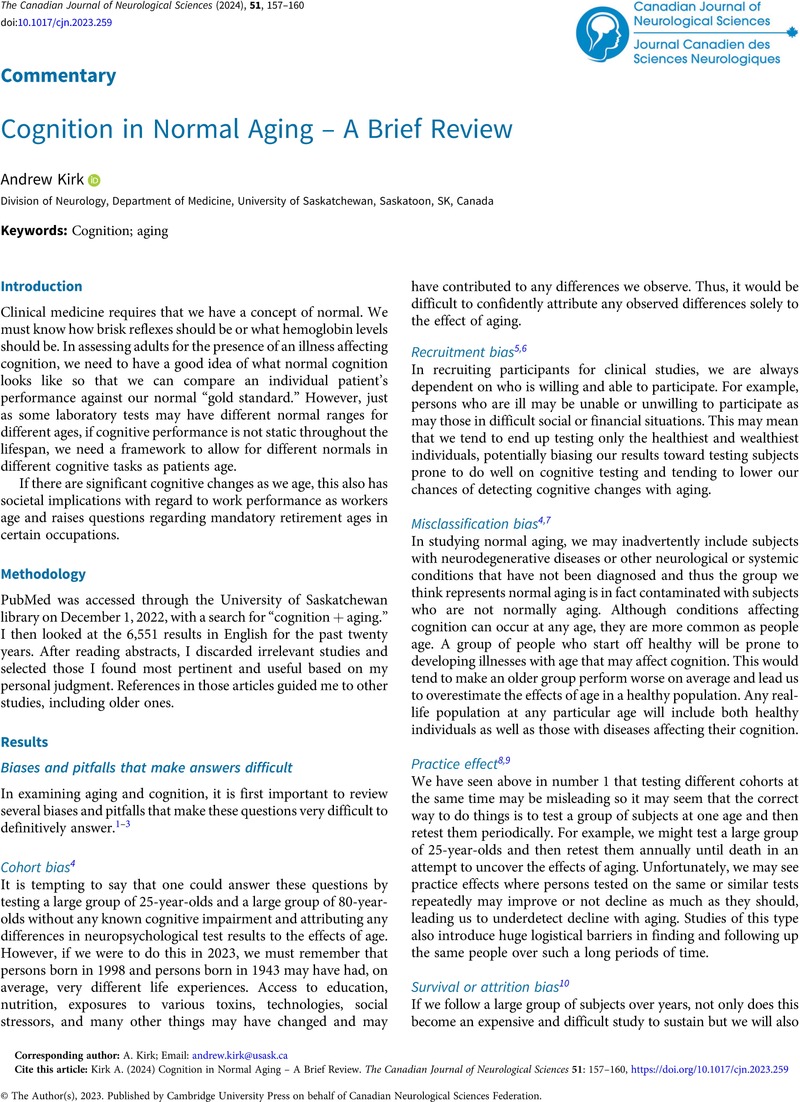No CrossRef data available.
Article contents
Cognition in Normal Aging – A Brief Review
Published online by Cambridge University Press: 04 August 2023
Abstract

- Type
- Commentary
- Information
- Copyright
- © The Author(s), 2023. Published by Cambridge University Press on behalf of Canadian Neurological Sciences Federation




